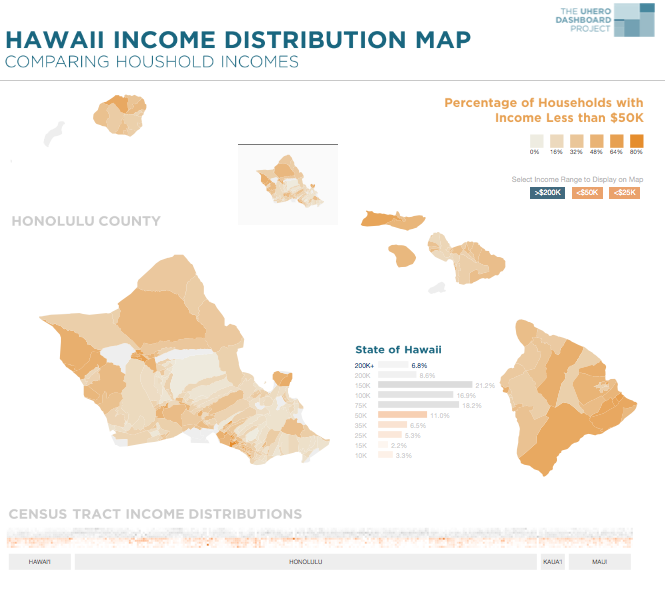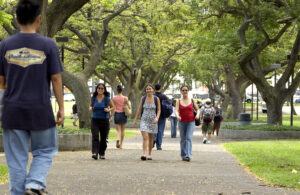By Jonathan Page and Tim Halliday
The outlook for inequality and poverty in Honolulu is not as rosy as it might seem at first glance.
On the 50th anniversary of the ‘War on Poverty’, poverty and income inequality are major policy issues facing President Obama’s administration and driving public policy analysis and debate. The Business Journals, parent of Pacific Business News (PBN), took a look at several measures of inequality and PBN followed up with a Honolulu specific look at the findings.
The PBN story characterizes Honolulu as among the most “equal” cities of the 102 examined in the study. 1
However, several inequality measures used in The Business Journals’ analysis are not ideal for cross-city comparisons. The measures are constructed using data from the American Community Survey, making them available for all cities, but not necessarily appropriate for cross-city comparison.
A major concern is that the inequality measures use dollar amounts as cutoffs. One measure looks at the ratio of the number of households earning less than $50,000 to the number of those earning more than $200,000. These data for Hawaii are certainly interesting. To see them for your neighborhood or county, visit our new income distribution map to see how these income groups are situated geographically. However, while these dollar cutoffs can help us identify differences in economic fortune across our state where the prices for goods are relatively constant, they are much less useful for comparing differences across the country where prices can vary dramatically.

The cost of housing, food, transportation, etc. is not equal across all cities. Differences in regional prices, and the need for regional price parity to make proper comparisons makes any comparison using a fixed-dollar poverty line substantially less meaningful.
In an analysis of regional prices by the BEA, the state of Hawaii had the highest price level among states, and Honolulu had the second-highest price level among cities. 2 The Business Journals analysis does not take these price differences into account. Honolulu’s high prices mean that a household earning $50,000 in Honolulu will be worse off than a household earning $50,000 in most other cities. Also, a household earning $200,000 in Honolulu is not as wealthy as households earning $200,000 in most other cities. Both of these effects mean The Business Journals’ ratio of low-income households to high-income households in Honolulu is too low.
Regional price differences also mean that estimates of the number of poor households in Honolulu using a single poverty line for the entire US are deceptively low.
Comparisons of inequality across the US are made difficult by regional price differences. We’ll do our best here to keep you informed. Watch for more updates, data, and visualizations from UHERO on issues of poverty and income inequality.
BLOG POSTS ARE PRELIMINARY MATERIALS CIRCULATED TO STIMULATE DISCUSSION AND CRITICAL COMMENT. THE VIEWS EXPRESSED ARE THOSE OF THE INDIVIDUAL AUTHORS. WHILE BLOG POSTS BENEFIT FROM ACTIVE UHERO DISCUSSION, THEY HAVE NOT UNDERGONE FORMAL ACADEMIC PEER REVIEW.
[1] In such markets, competition between firms does exist as firms try to attract more customers, but it is realized via incentives rather than changes (decreases) in prices. Instead, prices are kept relatively constant, but firms engage in fierce advertising highlighting the differences across products to attract customers.
However, G. Scott Thomas, author of The Business Journals post, does mention the nationwide trend towards greater inequality found by this Congressional Budget Office (CBO) study. But there is no city-level analysis of the trends in inequality in either the CBO study or The Business Journals post.





